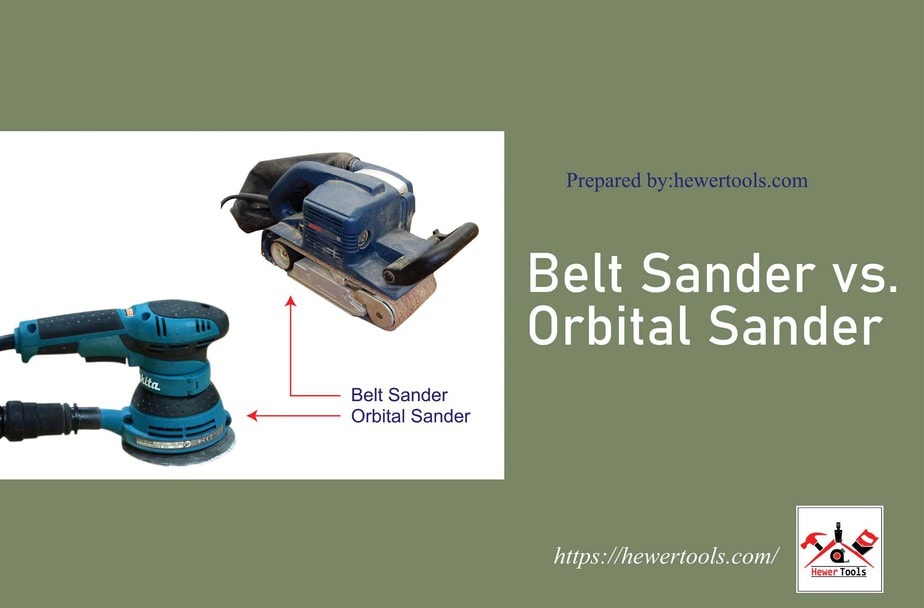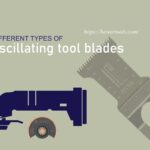Not all woodworking projects require sanding work; it is basically a portion of a woodworking process. The fact is, many of us don’t really enjoy sanding work because it is a time-consuming task. This article will help you pick the right tools for your project since this article is about belt sander vs. orbital sander.
However, to finish a sanding task quickly and precisely, a power sander is a handy solution.
Either you have to choose a belt sander or orbital sander. Though both of them are enlisted to the sander category, they are different in terms of use and performance.
So, which sander to pick?
What is an Orbital Sander?
In this chapter Belt Sander vs. Orbital Sander, you should know every type of the sender. First of all, we describe what orbital sander is?
An orbit sander is a hand-held power tool that is lightweight and can sand into tight corners effortlessly. Easy to maneuver is one of the notable features of an orbital sander. Also, it delivers effective performance against a flat surface.
Vibrating into small circles, they accomplish their work, and you can move them into any direction with no hassle.
The best feature of the orbital sander is; it doesn’t require specialized sandpaper. It means whatever sandpaper you have, using it will not be an issue. Besides, any grit of sandpaper is compatible with an orbital sander.
Quarter sheet orbital sander is the most commonly used orbital sander.
You will also find a larger half sheet orbital sander in the market. With the help of a spring-loaded clip, you can attach and disassemble the sandpaper into the pad without any problem.
Because of their square shape, orbital sanders are easy to use while working with stairs and floors. Also, they are non-aggressive and excellent pick before prepping for staining.
While sanding, they don’t sand off too much material, but delivers smooth sanding. Moreover, you will receive fewer marks compared to sanding by hand.
Overall, orbital sanders are a splendid choice for compact spaces.
What is a Belt Sander?
It is essential to understand the deferent fo Belt Sander vs. Orbital Sander. You should know what is a belt sander first.
Belt sanders are a multi-functional tool. This tool is much aggressive, big, and can eradicate different materials within a short time. Strip sander is another name of the belt sander.
You will find a more basic-sized strip sander in the market; size ranges from 3X18 to 4X24. Because of the versatility and easy controlling, the 3X18 size is a widely used belt sander.
And 4X24 is a giant and much more aggressive than it is suitable for professionals. Beginners can do much damage if they choose a 4X24 strip sander for their work. Strip sanders are consisting of a motor which is joined to 2 moving drums.
Using a strip sander, you can accomplish finishing touches on a wide range of materials such as metal, flooring, and wood. Moreover, you will not face any hassle to operate a strip sander, even if you are a beginner.
Fundamental Differences Between Belt Sander vs. Orbital Sander
Here is the major difference between a belt or strip sander and an orbital sander. The below chart will give you an obvious idea of the differences between these two.
| Feature | Belt Sander | Orbit Sander |
|---|---|---|
| Primary Purpose | Helps you to eradicate a variety of materials from a surface quickly. | Ensures smooth finishing by sanding minimal amount of materials. It is specially designed to sand in corners and compact areas. |
| Working Principle | It contains a continuous sand belt loop and 2 drums which can rotate. The loop rotates between 2 circulating drums. | Its rectangular head rotates following an orbit wave. |
| Thumbs Up | i) Removes materials aggressively. ii) Suitable for covering a larger area. iii) Perfect solution for even worktops. | i) Delivers smooth finishing. ii) Excellent maneuverability. iii) Best for sanding on corners, edges and compact areas. iv) Cut and use sandpaper, cutting from a standard sheet. |
| Thumbs down | i) Controlling is challenging. ii) While working with it, you will need to be careful. Otherwise your work will be spoiled. iii) Surface finishing is rough. | i) Removal rate of material is low. ii) The even worktops can get swirl mark after sanding. iii) Sandpaper replacing is a painful task at all. |
| Usage | i) Removes uneven surfaces of a larger area like tabletops. ii) Prepare a surface in order to assist you in achieving fine and smooth surfaces. iii) Easily eliminates paint. | i) Provides an even and smooth surface to ant woodworking or furniture projects. ii) Ensures find finishing into corners and curves. iii) Easily takes out paint and varnishes. |
What is Best for Aggressive Work?
A strip sander can take out a lot of materials (metal or wood) within a short time because of their aggressive characteristic.
You will need to use a strip sander at the initial stage of any sanding project where a wide range of materials needs to be removed.
Because of its aggressiveness, a strip sander can eliminate paint and stains from old wooden furniture. And then you can repaint or renovate the furniture if necessary.
Recommendation
The truth is, you can’t accomplish different types of sanding projects with any single sander. If you require to handle aggressive smoothing projects, you can achieve your expected result without a strip sander.
And then you will need an orbit sander to provide the surface a smooth and even finishing. Since a strip sander will not give you nice finishing on the corners or curves, you have to use orbital sanders because they are well-performer in corners and curves.
However, if you want my vote over one another, my vote will go to BELT SANDER.
Let me make you clear; why?
Strip sanders are a magnificent sanding tool when you are handing a larger and heavy-duty project. It works fast and provides an efficient sanding result.
With the help of a thick paper, it can remove a lot of materials without losing much time. Then using fine sandpaper, you can give a last touch up.
While handling colossal woodworking jobs, a strip sander is an efficient and time-consuming sanding power tool.
Final Thought
Whether you want to be a professional or own a sander at your home to accomplish different DIY projects, it is significantly essential to know the purpose of the sanding tool. Otherwise, you will purchase a wrong item that will not come to any work during your requirement.
Belt Sander vs. Orbital Sander in this chapter, we try to brief all the differences. Both of them use sandpaper to smoothen a surface, but their working procedure is unique from each other. Before making a decision, read this article thoroughly.
I have discussed in-depth information about belt sander vs. orbital sander to pick the right one for your project.
FAQ
A belt sander or strip sander is a sander used in the construction and finishing of wood and other materials. It has an electric motor that rotates a pair of drums on which it mounts an endless loop of sandpaper. … sometimes these are used to remove paint or finish from the wood. There are several types of belt sander Tabletop,
Points of interest. The best component of the orbital sander is its square shape, which allows it to get in corners and facing edges. You can also use a standard sandpaper cut to fit a purpose-built random-orbit sanding disc. Orbital sanders aren’t excessively forceful, so it’s difficult to expel a lot of material.
Random orbits or sheet sands leave vortex marks. This is what they do, and this is how they work. If you’re talking about the occasional very noticeable vortex sign, there’s probably something that got stuck between the sandpaper and the wood. It breaks the young pieces into pieces.
No sand furniture – strip. Stripping is faster and often safer. … throwing is almost always better than sand. First, there is much more to work for sand than using paint and varnish remover, unless the old finish is off.







